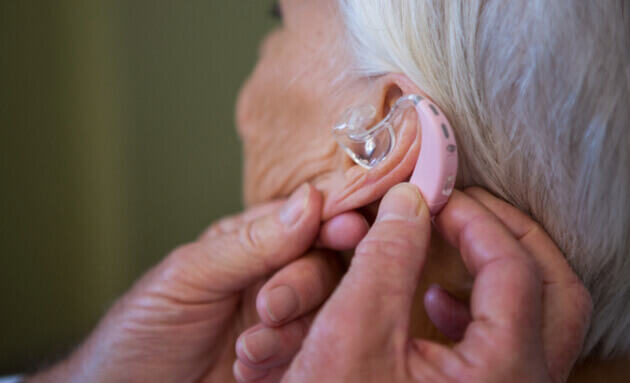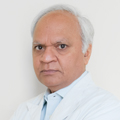
The Most Common Health Concerns For Seniors
Nov 11, 2018
Old age comes with health issues that impact the quality of life and the ability to live independently. It becomes important to understand age-related challenges and recognise that there are preventive measures that can place a person or their loved one on a path to healthy ageing.
Common Health Problems in the Elderly That Are Worth Monitoring
-
Osteoporosis
Osteoporosis occurs when bone density decreases and the body either makes less bone than before, loses too much, or both. Our bodies are constantly undergoing change, where old bones are being broken down and new ones are created. Peak bone mass is reached in the mid-’20s and by middle age, the rate of bone loss tends to increase. This is especially common in postmenopausal women and the end result is weak and brittle bones that are prone to fractures.
Men and women who have a lower bone density when the body starts undergoing bone loss, are at an increased risk of osteoporosis. Other risk factors include being menopausal, consuming a diet low in calcium and vitamin D, a diet high in sodium and caffeine, excess alcohol consumption, history of smoking, sedentary lifestyle, family history of osteoporosis, and history of taking medications (steroids and antacids) known to cause bone loss.
-
Hearing Impairment

Age-related hearing loss (presbycusis) gradually occurs in the elderly and it is one of the most common conditions affecting older adults. Normally, hearing is a result of a complex process between the outer, middle, inner ear and the auditory nerve that travels to the brain. Ageing leads to certain changes in the middle and inner ear that give rise to hearing impairment.
Additionally, a long history of exposure to loud noises can irreparably damage the hair cells in the inner ear that are critical to the process of hearing. Treatment for age-related hearing loss can include hearing aids, telephone amplifiers, or cochlear implants.
-
Age-Related Urinary Incontinence
There are four main categories of urinary incontinence that can affect the elderly. They are typically a combination of the effect of ageing on muscles and the physiological effect of another underlying condition. Here are the four types of urinary incontinence that occur in adults:
- Urge incontinence: This is fairly common in the elderly and is characterised by early, forceful contractions of the muscle in the bladder wall. This results in frequent small to moderate losses of urine even when the bladder is not full. The risk factors for urge incontinence are a history of stroke, multiple sclerosis, Alzheimer's disease, Parkinson’s disease, and pelvic organ prolapse.
Pelvic floor exercises to strengthen the bladder muscles and antispasmodic medications are usually recommended to individuals suffering from this condition.
- Stress incontinence: This is more common in early menopausal women or women who have had multiple vaginal childbirths. It is characterised by leakage of urine with an increase in the intra-abdominal pressure caused by sneezing, coughing, laughing or exercising. Pelvic floor muscle exercises, hormone therapy, and surgery are some treatment options for this issue.
- Overflow incontinence: People suffering from overflow incontinence generally have a diminished urinary stream and the sensation of incomplete voiding of urine. This can occur due to outlet obstruction or dysfunction in the bladder contractility. The treatment for this problem depends on finding the underlying cause and may include surgery or medications.
- Functional incontinence: This incontinence is associated with loss of mobility or cognitive impairment that hinders a person from using the restroom. Use of adult diapers and planned, assisted bathroom visits can help to manage this condition.
- Urge incontinence: This is fairly common in the elderly and is characterised by early, forceful contractions of the muscle in the bladder wall. This results in frequent small to moderate losses of urine even when the bladder is not full. The risk factors for urge incontinence are a history of stroke, multiple sclerosis, Alzheimer's disease, Parkinson’s disease, and pelvic organ prolapse.
-
Cardiovascular Disease

Cardiovascular disease in adults is an umbrella term used to categorise diseases of the heart and blood vessels. This includes conditions like congenital heart disease, hypertension, stroke, heart failure, coronary heart disease, arrhythmia and atherosclerosis.
Cardiovascular disease is known to affect at least one-third of men and women aged 45 to 54 years old. An unhealthy lifestyle that includes regular alcohol consumption, smoking and intake of high-trans foods is one of the main contributors to this condition. Quitting smoking, reducing alcohol intake, getting plenty of exercise, and consuming a high fibre diet are some of the ways to get this condition under control.
-
Alzheimer’s Disease
Alzheimer’s is the most common cause of dementia among older adults. Dementia is the loss of cognitive functioning - thinking, remembering, and reasoning - and certain behavioural abilities to such an extent that it begins to interfere with a person’s daily life and activities. Dementia can range from the mildest stage, when it begins to affect a person’s functioning, to the more severe stages, when the person depends completely on others for basic activities of daily life.
The first symptoms of Alzheimer's vary from person to person. For many, a decline in non-memory aspects of cognition, such as word-finding, vision/spatial issues, and impaired reasoning or judgment, may signal the very early stages of Alzheimer’s disease.
The cause of Alzheimer’s is related to genetics, the onset of which results in the formation of lumps or tau in the brain. Alzheimer’s is irreversible, but certain medications in the early stages can improve the symptoms in adults.
Eating a balanced diet, exercising, avoiding alcohol and cigarettes, along with regular health checkups can help in detecting and avoiding the onset of many diseases that affect the elderly.

